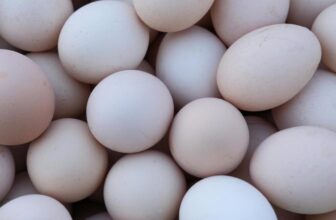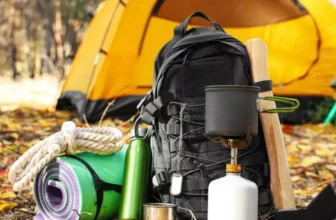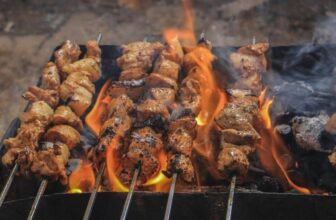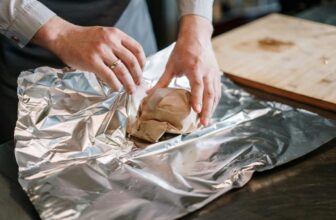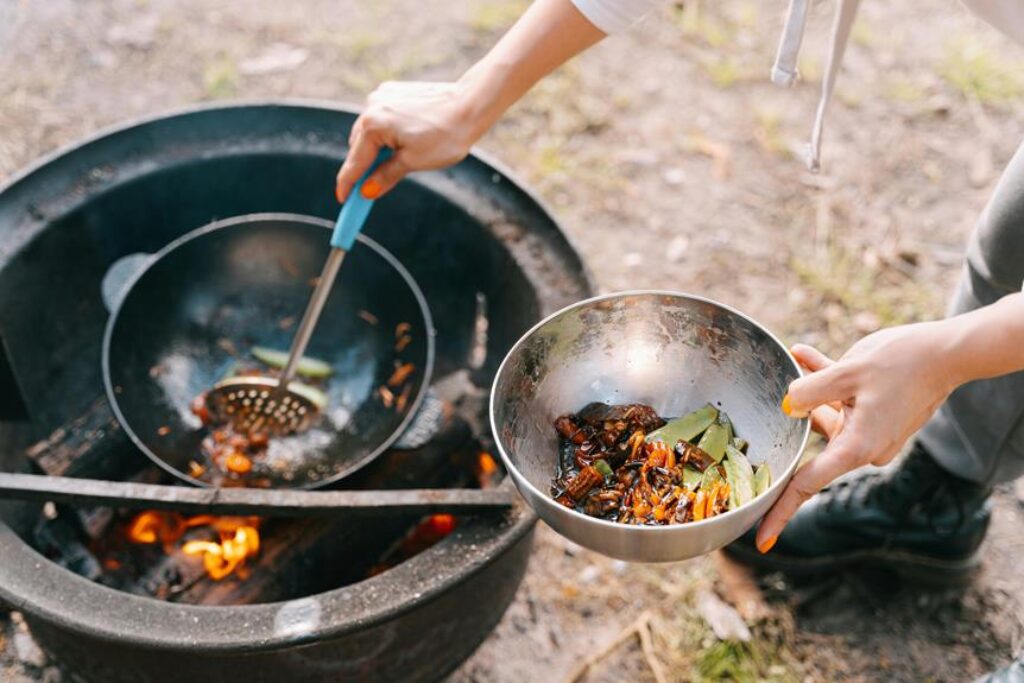
When you’re out camping at high altitudes, choosing the right cooking methods can make all the difference in your meal prep. Imagine the satisfaction of enjoying a perfectly cooked dish despite the challenges posed by lower air pressure. From pressure cooking to grilling, each method brings its own unique benefits to the table. So, which cooking techniques will help you conquer high-altitude cooking like a pro? Stay tuned to discover the secrets to culinary success in the great outdoors.
Altitude Cooking Challenges
When cooking at high altitudes, you may encounter challenges that require adjustments to traditional cooking methods. One significant issue is that water boils at lower temperatures due to the decreased air pressure. This means foods take longer to cook and can end up dry or undercooked if not adjusted properly. To combat this, you might need to increase cooking times or temperatures.
Another challenge you might face is the rapid evaporation of liquids. At higher altitudes, liquids evaporate quicker, leading to sauces and soups thickening faster than usual. To prevent this, you may need to add more liquid to your recipes or cover your cookware while simmering.
Additionally, baking can be tricky as leavening agents work differently. The reduced air pressure causes dough to rise more rapidly and then collapse, resulting in dense baked goods. Adjusting the amount of leavening agents or using high-altitude recipes can help you achieve better baking results. Be mindful of these challenges and make the necessary adjustments to ensure your high-altitude cooking endeavors are successful.
Best High-Altitude Cooking Methods
To achieve optimal results when cooking at high altitudes, consider utilizing methods that account for the unique challenges posed by decreased air pressure and faster evaporation rates.
One of the best cooking methods for high-altitude camping is pressure cooking. Pressure cookers help to increase the boiling point of water, allowing food to cook faster and more evenly.
Another effective technique is using a Dutch oven. This heavy cooking pot with a tight-fitting lid retains moisture well, ensuring that your dishes stay flavorful and moist despite the dry mountain air.
Grilling is also a great option for high-altitude cooking. The direct heat from the grill helps to sear food quickly, locking in juices and flavors.
Additionally, using a slow cooker can be advantageous as it allows for long, gentle cooking times, perfect for tenderizing tougher cuts of meat at higher elevations.
Experiment with these cooking methods to elevate your high-altitude camping culinary experience.
Essential Cooking Equipment for Camping
Considering the unique challenges of high-altitude cooking, having the right cooking equipment for camping is key to ensuring a successful culinary experience. When preparing for your high-altitude camping trip, there are a few essential cooking tools you shouldn’t leave behind.
Firstly, a reliable camping stove is a must-have item. Opt for a stove that can handle windy conditions and maintain a consistent flame in the thin air of high altitudes. Additionally, pack a set of lightweight cookware such as a durable pot and pan, which are essential for cooking meals efficiently.
Don’t forget to bring a portable coffee maker if you’re a coffee enthusiast; it can be a game-changer in the chilly mornings at high altitudes. A sturdy cooler to store perishable items and a set of utensils including a spatula, tongs, and a sharp knife are also crucial for your camping kitchen.
Tips for Successful High-Altitude Cooking
For successful high-altitude cooking, adjust your cooking times and temperatures to account for the lower boiling point of water. At higher altitudes, water boils at lower temperatures due to decreased atmospheric pressure. This means that foods will take longer to cook properly. To counter this, increase your cooking times or use a higher heat setting. Keep a close eye on your food to prevent overcooking.
When baking at high altitudes, make adjustments to your recipes. Reduce the amount of leavening agents like baking powder or baking soda to prevent your baked goods from rising too quickly and then collapsing. Additionally, increase the baking temperature slightly and extend the baking time as needed.
When preparing meals at high altitudes, use a food thermometer to ensure that your food reaches safe internal temperatures. Because water evaporates faster at higher elevations, be sure to monitor the liquid levels in your dishes and add more water or broth if necessary. With these adjustments, you can enjoy delicious meals even at high altitudes.
Camping











